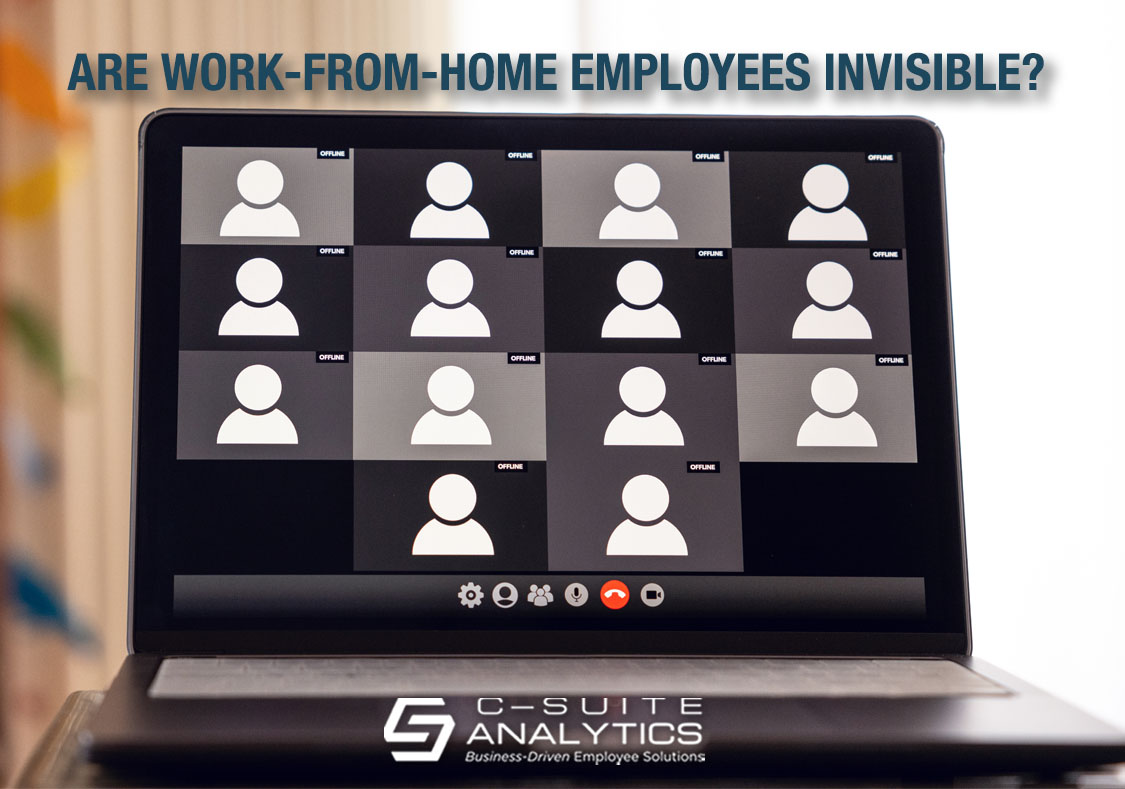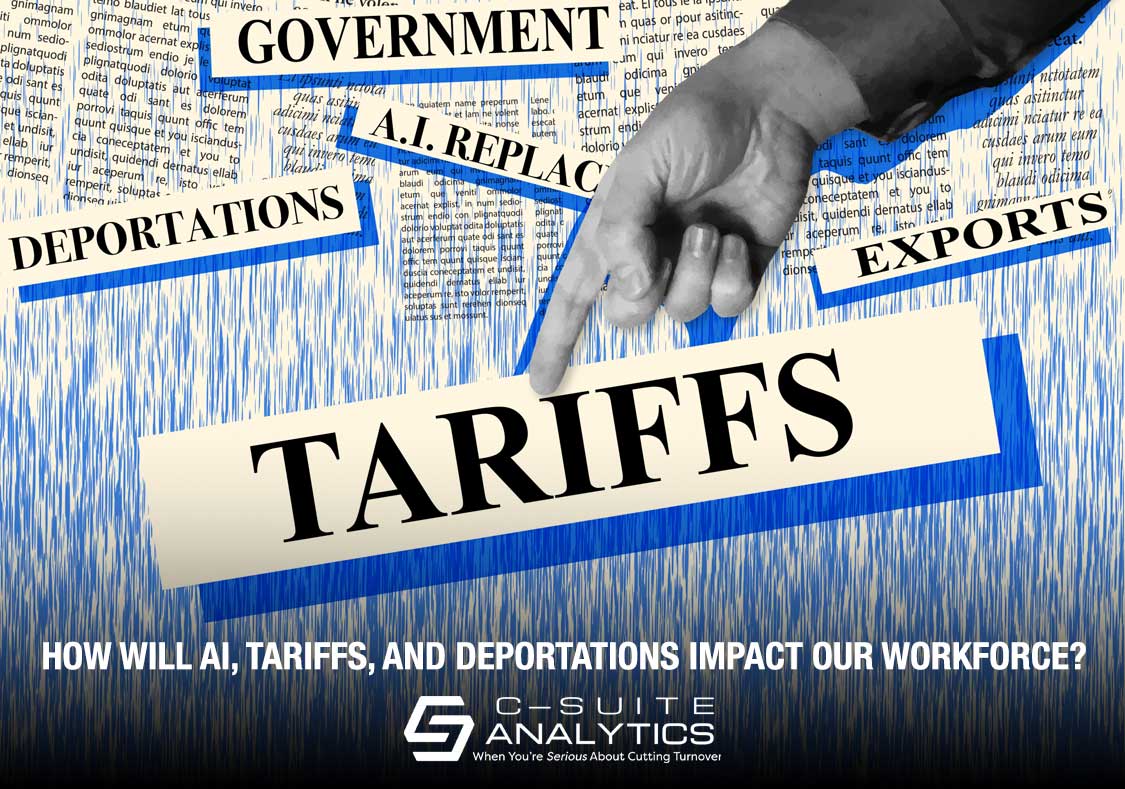AI, deportations, tariffs, and birthrate declines are reshaping America's workforce—blue- and white-collar alike. From baby boomer exits to AI disruptions, breaking down the workforce challenges no leader can afford to ignore.
Report: Are Work-From-Home Employees Invisible?

What was inevitable is now fact. The combination of many employees working from home plus our trudging through the highest period of quits in history has led to this outcome:
A high number of employees have joined and left companies without ever meeting another employee in person.
Hiring and managing people in 2021 has been such an uphill climb that this stunning outcome might merely lead to shoulder shrugs. Makes sense, doesn’t it? If you join a company working from home and then quit, it’s easy to understand how you would have never seen a colleague in person. Yet accepting this as normal, as OK, tells how far we’ve fallen on the slippery slope of disregarding employee engagement and retention. Here are some employee quotes from the New York Times’ investigation which they aptly titled, If You Never Met Your Co-Workers in Person, Did You Even Work There?[i]
- One non-profit employee in Virginia said she wouldn’t miss her colleagues because she knew nothing about them, saying “I knew their names and that’s about it”.
- A marketing employee who got laid off in San Francisco said, “I felt like a name on a spreadsheet. Just someone you could hit delete on. I don’t even know if they knew who I was”.
- Said another, “You know people’s motivation is low when their cameras are off. There was clear disinterest from everyone to see each other’s faces”.
Then follows this quote from an ex-Google employee that nails the challenge of accountability: “If one wants to put in 20 hours a week and pretend you’re putting in 40 while doing other stuff, that’s fine, but I wanted more connection.”
A Stanford professor sums up this blank space of feelings by saying, “If you’re in a workplace or a job where there is not the emphasis on attachment, it’s easier to change job, emotionally”.
At first one has to wonder just how productive any of these employees were in their jobs given their intense feelings of abandonment. The greater message, though, is what has happened to employee retention and engagement??? Those working in HR have three jobs and they are all about talent…recruiting talent, engaging talent, and retaining talent. If we polled the HR community on which of these three assignments they are spending most time and energy on, the overwhelming answer would be recruiting.
To move from problems to solutions, let’s agree that leaders must develop thick, meaningful, and yes emotional relationships with each member of their virtual teams. That from an employee’s perspective, my boss better know me even if my peers do not. And let’s go one giant step further and say the plan for leaders to develop these meaningful relationships must extend way beyond the trendy social activities like virtual happy hours or having DoorDash deliver lunch during a virtual meeting.
Then the therapist side of me wants to toss in two other facts, proven by decades of research:
- Given the limitations imposed by virtual work, meaningful relationships cannot be built without a structured approach, an approach that details a step-by-step way to connect with another person on topics important to them.
- And the number one reason employees stay or leave, or engage or disengage, is how much they trust their boss.
I see it as mandatory then…strong word, mandatory…that organizations with large chunks of virtual employees train their leaders to conduct Stay Interviews. I invented Stay Interviews in 2012 when just a handful of employees worked virtually, yet there was a gaping hole then between leaders and their employees because relationships were so one-sided. Think as just one example a floor supervisor in manufacturing or food processing who directed employees about their work but developed relationships with just a few of them, the ones for which becoming buddies was natural and came easily. These are the employees that supervisor hung out with during breaks, had lunch with, maybe socialized with after work.
But Stay Interviews have an entirely new role in 2021 and beyond. Our leaders need structure and training to connect with ALL employees, virtual ones for the reasons stated here and also for those working on the shop floor because the percent of employees who quit their jobs has never been higher.
Should you need one more dose of encouragement, imagine reducing your turnover by 30% and improving your engagement scores by a similar amount. That’s what our clients do when we train their leaders to ask 5 stay interview questions and then listen, probe to learn more, take pages of notes, and then solve their employees’ problems.
I started this article by noting the 2021 combination of more employees working from home plus the highest-in-history number of employees quitting their jobs. Never has leadership been challenged more, and especially at the first-line supervisor level. Without solutions we will watch productivity fall off the roof…and Stay Interviews are the very best solution I know.
Our Comprehensive Turnover Solution is designed to get results for companies like yours by cutting turnover 30% and more. Write me or connect with me if you want to learn more…DFinnegan@C-SuiteAnalytics.com.
[i] https://www.nytimes.com/2021/09/08/business/remote-office-co-workers-working-from-home.html



